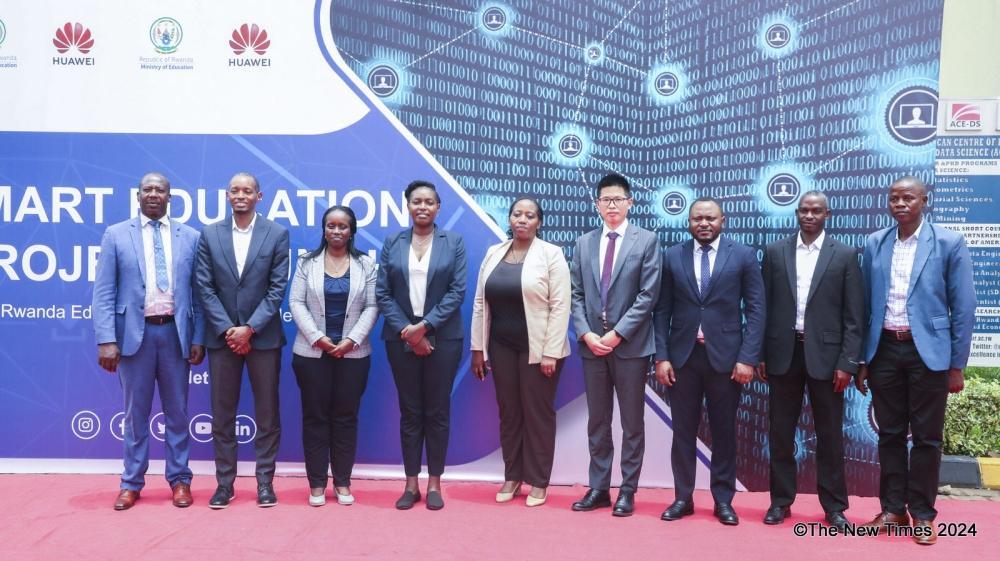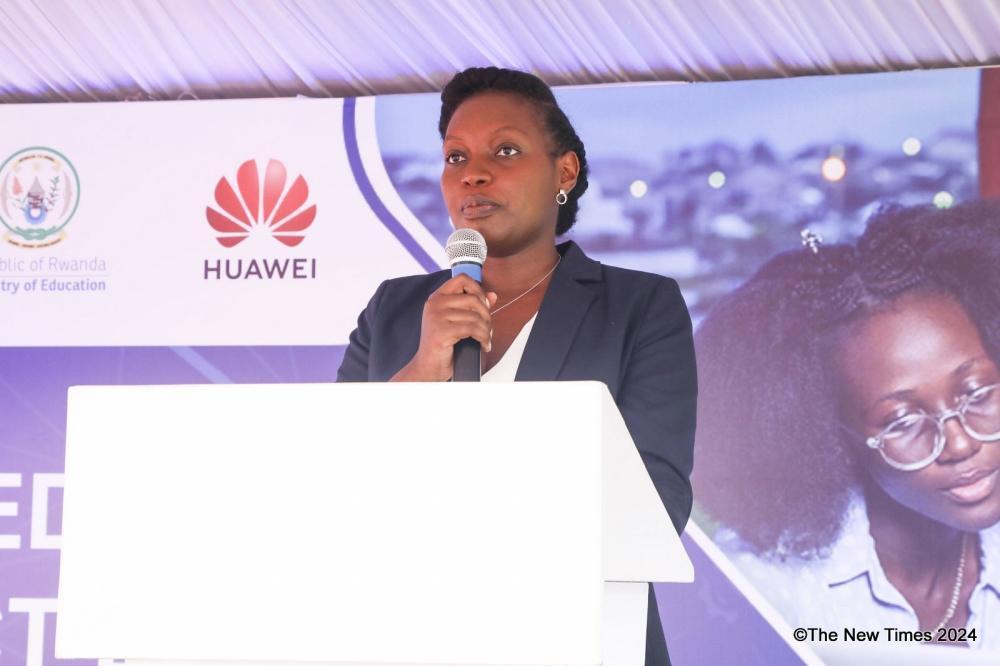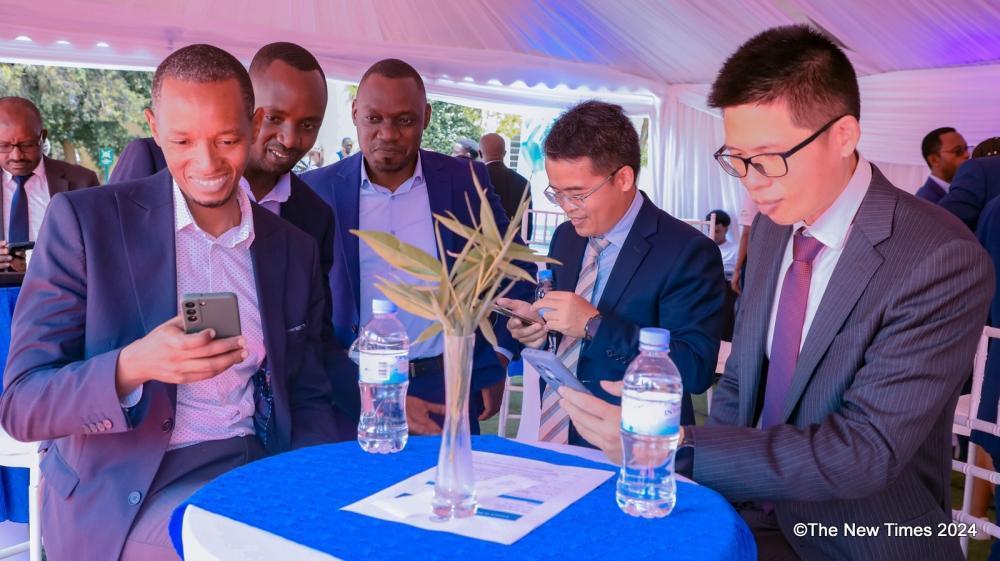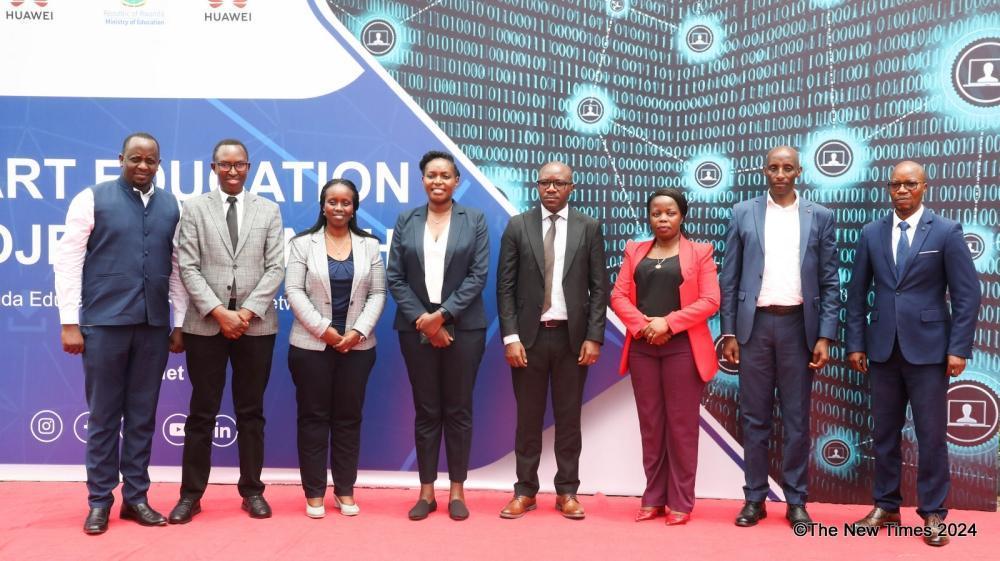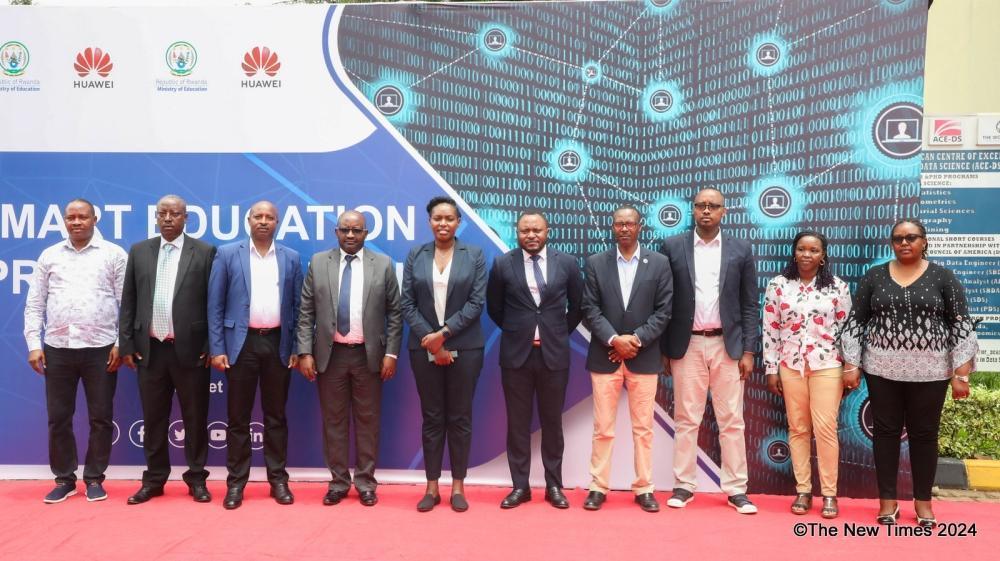Africa-Press – Rwanda. The Ministry of Education inaugurated the Rwanda Smart Education Network on Tuesday, March 26. Housed within the University of Rwanda (UR) Gikondo campus, the Education Data Center marks the second such facility, following a similar one at UR’s Huye campus. As part of the broader “Smart Education Project,” it is intended to serve over 1,437 schools nationwide.
The launch event commenced with a tour of the data centre and a network site at GS Mburabuturo, attended by representatives from the education ministry, higher learning institutions, secondary, and primary schools, among others.
This initiative aims to address the growing need for enhanced bandwidth, improved connectivity reliability, and greater affordability in internet access for schools and higher learning institutions. Funded by a $30 million (roughly Rwf38.6 billion) loan from the Export-Import Bank of China (China Exim Bank), and implemented by Huawei, the project seeks to digitise Rwanda’s education system and overcome existing challenges.
“We have successfully connected more than 500 schools, and it’s essential for us to monitor their performance to identify areas for improvement,” stated Claudette Irere, Minister of State for Education, during a press interview.
Claudette Irere, Minister of State for Education, delivers remarks during the inauguration
“With over 75 per cent of secondary schools and 55 per cent of primary schools in Rwanda now linked to the internet, the growing integration of ICT in educational processes has become evident. This reliance on the internet for various purposes, including research, e-learning, and content creation, underscores the necessity for increased internet bandwidth,” she said.
Internet bandwidth refers to the maximum amount of data that can be transmitted over an internet connection within a certain period, typically measured in bits per second (bps) or megabits per second (Mbps). In simpler terms, it’s like the width of a pipe through which data flows. The wider the pipe (higher bandwidth), the more data can flow through at once, allowing for faster and smoother internet usage.
“The project, once finished, will make a 15 per cent stride towards our goal of connecting all schools by 2024. We’ve also notably enhanced internet speed, offering schools access to speeds as low as 25Mbps for improved connectivity. It’s worth noting that this enhancement isn’t limited to Kigali,” said Irere.
Dominique Ingabire, principal of RP IPRC Karongi, one of the schools benefiting from the project, shared insights: “Operating across two campuses, one in Bwishyura sector and the other adjacent to Lake Kivu in Nyamishaba, our institution, situated in a remote area, greatly benefits from the Smart Education Network.
“Previously, our main campus had access to 15Mbps internet, while the other had 10Mbps. Now, serving as a backbone layer, our college facilitates internet connectivity for schools in Rutsiro, Karongi, and Nyamasheke districts.
“Since the inception of the Smart Education Project pilot on February 6, we’ve witnessed significant improvements. The campus atmosphere has notably improved, with students and lecturers enjoying smoother internet access for academic activities. As we prepare to extend this initiative to our second campus, we anticipate even greater benefits for our community.”
Delegates during the launch of e Rwanda Smart Education Network on Tuesday, March 26. Photos by Craish Bahizi
How does it work?
The Smart Education Project revolves around Education and Research Network data centres situated at UR Gikondo and UR Huye. These centres serve as the backbone for sharing educational content through an Intranet, a localised network designed specifically for educational purposes.
The project comprises two primary layers. In this context, a “layer” denotes a distinct level within the system’s architecture, each with its own functions and responsibilities. These layers collaborate to establish a cohesive and efficient network environment.
The first layer, known as the Internet Service Provider (ISP) to Data Center (DC) layer, acts as a vital intermediary between schools and centralised data centres. Here, schools host resources, educational materials, and content on local servers within their premises. These data centres adhere to specific hosting standards and labelling requirements to ensure the secure storage and accessibility of educational resources.
On the other hand, the Backbone layer lays the groundwork for distributing connectivity throughout the entire network. It prioritises critical areas within schools, including libraries, administrative blocks, conference rooms, and computer facilities. Through strategic infrastructure implementation, this layer facilitates data transmission and supports various educational activities, thereby enhancing the overall learning experience.
According to officials, the project has the potential to expand its reach to over 5,000 schools nationwide, effectively bridging the digital gap.
For More News And Analysis About Rwanda Follow Africa-Press

